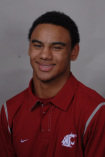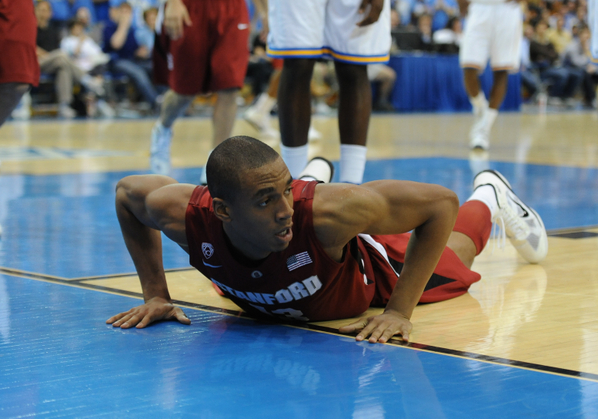Posted by rtmsf on April 21st, 2008
Spring is in the air, the F4 is well into our rearview mirror and we’re gearing up for nightly visits with Ernie, Chuck and The Jet on Inside the NBA (with occasional stop-ins from Magic, Reggie and several others, of course). This means it’s playoff time in the Association, which also means its time for RTC’s second annual review of the pedigree of the key contributors for all sixteen playoff teams. Yes, second annual. That’s the first time we’ve been able to say that and it feels invigorating.

Where Are All the Auburn Players, Chuck?
As the three of you who were around at the beginning of this blog may recall from last year’s post, we learned that 56% of key contributors on playoff teams went to a BCS conference school, another 18% came from other levels of college basketball, and 26% were foreign and/or never stepped foot on a college campus. We also learned that the historically best schools tend to produce the most contributing pros on playoff teams, as Duke, Kentucky, UConn, UNC and UCLA led the way with the most players last year. But that trend was bucked somewhat when one considers that teeny little Florida International University managed to produce two players who were key contributors to playoff teams, more than such notable programs as Syracuse, Louisville and Indiana.
So what about this year? For ease of analysis, we did what we always do – we created excel tables! Remember, all data only considers what we call key contributors – players who played in at least half of its team’s games and averaged over 10 minutes per game. For the starters data, we used the starting lineups as announced in the first game of each playoff series last weekend (therefore, Gilbert Arenas is not represented, having only played 13 games this year and coming off the bench in the first game of the playoffs). We ended up with 158 key contributors and 80 starters over sixteen teams.

Quick Hits:
- Roughly the same number of key contributors on this year’s playoff teams (25%) never stepped foot on a college campus as compared to last year (26%). We expect that the foreign cohort will stay roughly the same (15%/16%) or even rise a little in the future, but with the NBA’s new one-and-done rule now in the second year of its implementation, the high school-only crowd (11%/14%) should continue to dwindle in the next five years.
- Last year Duke, UConn and Kentucky each had six players contributing to playoff teams. This year, only UNC has as many as five contributors, all of whom are starters (R. Wallace, J. Stackhouse, M. Williams, A. Jamison, B. Haywood). There are five other schools with four contributors each, and seven schools with three each. After UNC’s five starters, only Duke (C. Boozer, G. Hill, S. Battier), UConn (R. Allen, C. Butler, R. Hamilton) and Wake Forest (T. Duncan, J. Howard, C. Paul) have as many as three starters in the playoffs this year (although we’d take Wake’s three over anybody else’s).
- The cream rises, doesn’t it? Of the top 13 schools mentioned with three or more contributors this year, they account for 38 of the last 60 Final Four teams (63%) and 10 of the last 15 national champions (67%).
- Which school doesn’t belong (again)? Thanks to Raja Bell and Carlos Arroyo, little Florida International once again made its name onto the list among all the heavyweights with two key contributors. FIU has more players contributing in the playoffs than the likes of hoops stalwarts Ohio St. (0), Louisville (0), and Indiana (0).

More Quick Hits:
- Considering only the 118 players who went to college in some capacity, the six BCS conferences account for 69% of key contributors and 50% of playoff starters. This is a dropoff from last season (76%/77%), which shows some of the variability that goes into comparing different playoff teams in a year-over-year manner – four of the sixteen teams in this year’s NBA playoffs are different.
- Take a look at the top three conferences above – the ACC, Pac-10 and SEC. They look roughly equivalent when comparing them by number of key contributors (17/15/15), but when you consider them by starters (13/3/8), you see a rift develop. It appears that all three leagues produce a lot of NBA talent (47 players), but the ACC appears the best in producing playoff-caliber starting talent. The SEC is solid at doing so, but the Pac-10 appears to excel in producing backups for good teams. By the same token, the Big East may not have as much NBA talent on good teams this year (only 11), but they tend to be starters (8).
- The mid-major and low-major D1 conferences account for 29% of key contributors and 27% of starters this year, somewhat above last year’s totals (24%/13%). Speaking of mid-majors, take a look at the Atlantic 10 again – with 8 key contributors and 5 starters, this league arguably outdoes a certain midwestern conference with eleven members. Other than the A10, only the MAC and the Sun Belt are mid-majors with multiple starters in the playoffs this year.
- Devean George (Augsburg College), Ben Wallace (Virginia Union) and Jamario Moon (Meridian (MS) Community College) represent the three non-D1 players who contribute for playoff teams.
Well, that’s all that jumped out at us in reviewing the key contributor and starter lists. If you see something else we missed, just put it in the comments. And if there’s a calculation you’d like to see, let us know and we can try to figure that out as well.
| rtc analysis
| Tagged: acc, atlantic 10, bcs conferences, big east, duke, florida international, kentucky, key contributors, mac, nba playoffs, one and done, pac-10, sec, starters, sun belt, uconn, unc, wake forest
Share this story














































